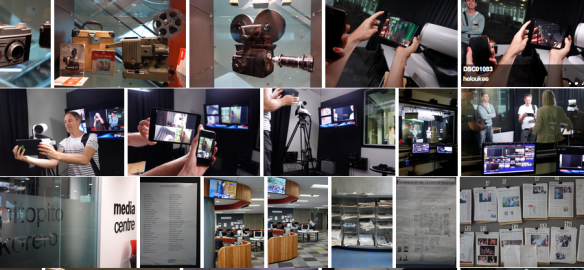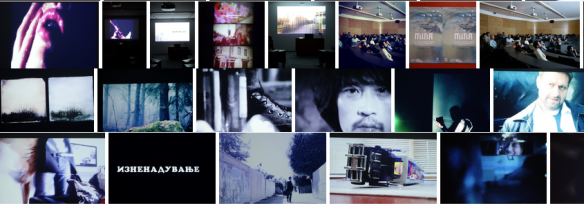This is my post for http://whydoyouteach.wordpress.com
I never wanted to be a teacher.
I’m from a family of teachers: parents, aunts, uncles, grandparents… my parents’ friends were teachers, half of my childhood friends became teachers. Teaching was pretty much the last thing I wanted to do. It seemed so… predictable. I didn’t know what I wanted to do but I knew I didn’t want to teach. It was something I actively resisted; I transferred from my first degree (music and performance) to something else because I knew if I stayed at music college I’d likely end up teaching.
I did NOT want to be a teacher.
So I left music college and started a Linguistics degree – a good move as it turns out, as it introduced me to multiple disciplines including phonetics and speech synthesis, formal semantics and AI, anthropology, sociolinguistics… the list goes on. When it came to my intensive project, I had such a fantastic time measuring hundreds of samples looking for 10msec differences in the length of ‘a’ in 4 words in various English accents (yes, really) that I realised I wanted to carry on with research; to always be learning. I also wanted to carry on making things for the web (which was my sideline). Luckily, I came across a research post that allowed me to do both. Best of all, it involved NO teaching, just pure R&D.
Sixteen years later, here I am: teaching.
So how the hell did that happen?!
By accident, in all honesty. An academic in the department passed away just before the autumn semester in 2000, and I was asked to deliver his multimedia modules (they were desperate – term was only a week away) and that’s how it started.
I spent the next 5 years delivering a range of multimedia programming modules to students who were not much younger than I was. Although it was fairly mechanistic as I was told what to teach, I enjoyed it – and I think they did too. We had the same cultural references and knowledge of the Manchester social/music scene and I suppose it worked well partly because I understood them and could create assignments that they could relate to.
But I still didn’t want to be a teacher. Not really.
In 2005 I started using blogs and wikis with students in Europe as part of an EU project based around international student support, and this led to a Eureka moment. When I say ‘Eureka moment’, I mean that it was this shift towards open, connected platforms (where multiple audiences could engage in dialogue – to varying degrees of (in)formality) that led to my theoretical knowledge (of social constructivism) being transformed into a powerful experience; deep, authentic and meaningful. I wasn’t just describing the concept; i was feeling it. Through using open, web-based platforms we really were moving towards a culture of reflection, self-expression and participation. I was learning more about students as individuals, rather than just as cohorts taking particular courses. I became interested in learner identities, and found myself taking an increasingly holistic approach to education as these ‘web 2.0’ technologies allowed us to blur the boundaries between public and private, between education, home and work, between formal and informal learning. I had been using Garrison and Anderson’s Community of Inquiry model in my work on the EU project, and found that social presence was enhanced significantly when using Web 2.0 platforms. They would write about how they felt in a personal blog more readily than they would in a standard discussion forum specifically set up to discuss ‘the course’. Most importantly, they weren’t just communicating with their peers and their tutor; they were potentially communicating with the world, presenting themselves as individuals with hopes and fears and dreams – not just as students in formal education.
“Social presence is the ability of learners to project their personal characteristics into the community of inquiry, thereby presenting themselves as ‘real people.’” (Garrison & Anderson, 2003:23)
The idea of ‘real people’ is key here. Once I started using these platforms in my own teaching, my curriculum changed. The starting point wasn’t the syllabus. The starting point was the individual. I’ve moved from ‘teaching’ multimedia programming into something that’s much harder to define. My courses involve transmedia production, digital scholarship, networked learning, with smatterings of cultural and media theory (Keegan, 2013). I’m still based in Computing, Science and Engineering, but fortunately there is growing recognition of the value of moving beyond disciplinary boundaries. Through connecting with others and developing our networks, we’re more open to opportunity and serendipity and multiple perspectives. I’d describe my ‘teaching’ now as based on learning to learn, questioning assumptions and opening minds to new ways of seeing; a pedagogy of being which is far more indebted to Freire than Skinner.
Connected learning has led to connected teaching which has led to connected courses. Nowadays i’m just as likely to work alongside colleagues on the other side of the world, connecting our learners through open, social platforms in projects that cross levels and disciplines (Cochrane et. al., 2014). I’m constantly learning from and challenged and inspired by those i’m connected to through online networks. The same goes for my students; they challenge me, they inspire me and I learn from them. I’m aware I may be eulogising here, and ‘free-range’ learning and teaching might not be for everybody. However, I can honestly say that now that my courses have become more like unbounded communities of inquiry where we go on a journey together, often into the unknown, I’m genuinely thankful to be ‘teaching’.
Because to teach is to learn together.
When I sat down to write this post I made a list of the reasons why I teach. It’s a long list. It made me realise that while I may have started teaching for reasons that were largely instrumental and accidental, it’s now become who I am.
Later today, we’ll be launching the first unit in Connected Courses: Why We Need a Why. For the kick-off, Mike Wesch will be in conversation with Cathy Davidson and Randy Bass contemplating the purpose of higher education.
Why do we do what we do?
What’s our CORE reason for teaching a specific class?
As a companion ‘make’ for this unit, we want people to share their WHY – specifically, Why Do You Teach? We’d love you to contribute short videos and images that we can pool together into a video like Mike’s A Vision of Students Today – except this time it’s us; faculty.
So have a think. Make a list. Pick one. Pick more than one. It’s always good to remind ourselves why we do what we do.
To find out more about how to contribute, come on over to http://whydoyouteach.wordpress.com
REFERENCES
Cochrane, T., Antonzak, L., Keegan, H., Narayan, V. (2014). Riding the wave of BYOD: developing a framework for creative pedagogies. Research in Learning Technology. Available at: http://www.researchinlearningtechnology.net/index.php/rlt/article/view/24637. Date accessed: 13 Sep. 2014.
Garrison, Randy & Terry Anderson, (2003). E-Learning in the 21st Century: A Framework for Research and Practice (p. 23).
Keegan, H. (2013). Emerging Pedagogies. In: Fraser, P. and Wardle, J. (Ed) Current Perspectives in Media Education – Beyond the Manifesto. Palgrave Macmillan, pp. 128-144. http://usir.salford.ac.uk/29556/





